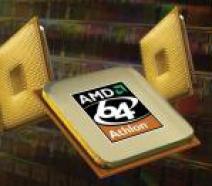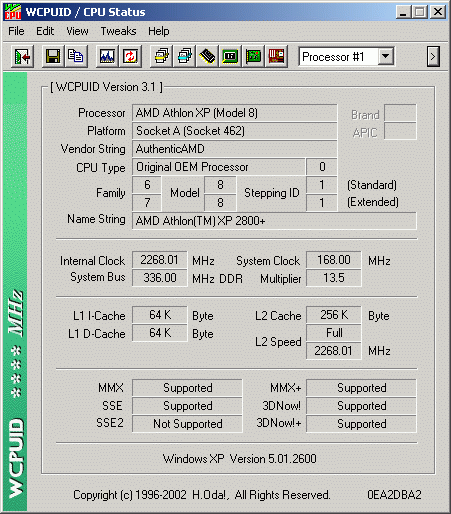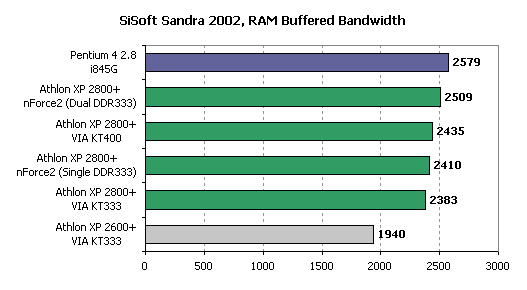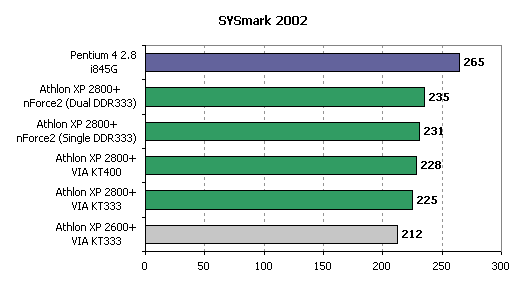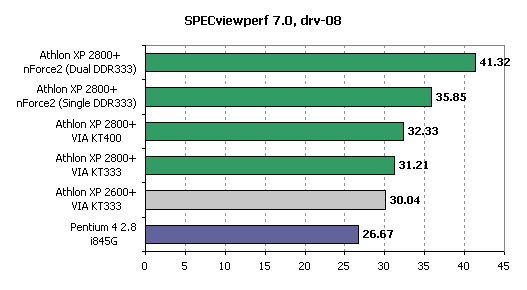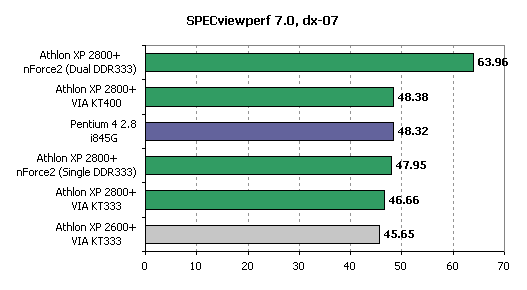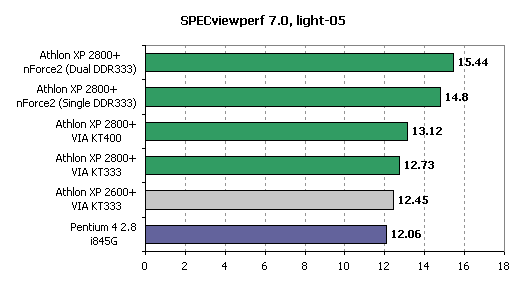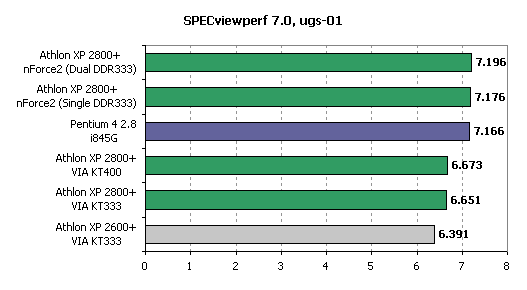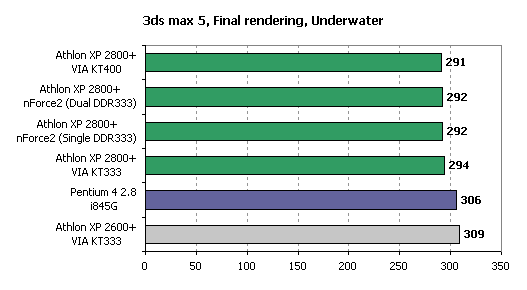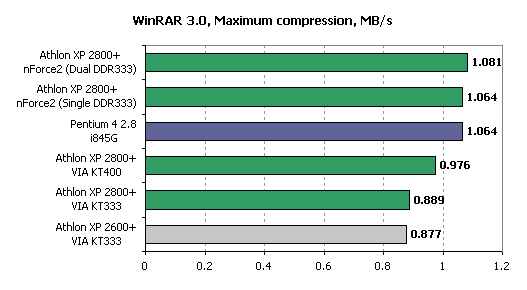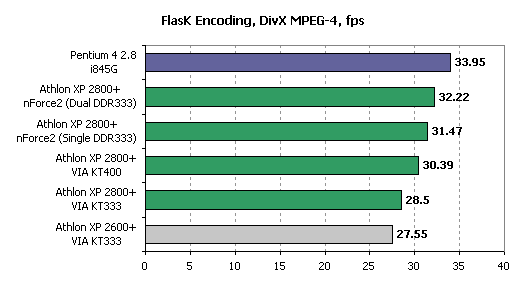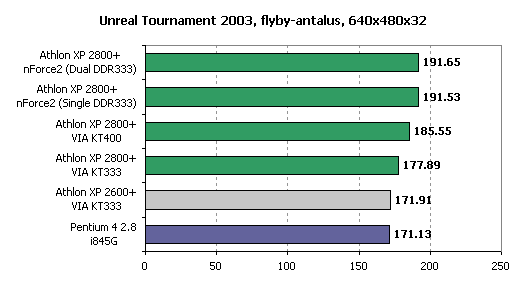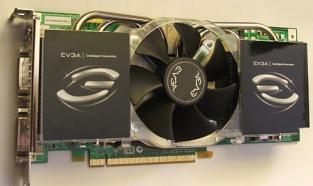ATHLON XP 2800+ CPU REVIEW
![]()
|
|
 |
||||||||||||||||||||||||||||||||||||||||||||||||||||||||||||||||||||||||
| Posted:2002-07-15 By Asboulougia Number of View:4674 |
|||||||||||||||||||||||||||||||||||||||||||||||||||||||||||||||||||||||||
By :Asboulougia Posted:2002-07-15
AMD once again reminded of itself as the developer of high-performance processors. Today the companylaunched two new CPUs: AthlonXP 2700+ and Athlon XP 2800+. We would like to offer you our reviewof the fastest AMD solution! Table of contents:
Well, it becomes a good tradition to launch CPUs unexpectedly. At least it has already become typical of AMD. Of course, as they are laying themselves out trying to catch up with Intel, which is a really tough thing to do. But they cannot afford to show weakness, no way. The potential Hammer owners shouldn\'t get any cause for disappointment with AMD before this 64bit wonder comes out. That is why it is quite natural that AMD does its best to keep pace with the current industry leader. It seems to me that I have recently finished my Athlon XP 2600+ Review, and now it\'s high time I introduced a new Athlon XP 2800+ processor. Well, the arms race in the processor market is not a bad thing, really. Although the CPUs get outdated much faster now, they are selling at a tangibly lower price, which is always welcomed by the customers.
There is one upsetting issue, however. Trying not to fall far behind Intel in terms of the top-models performance, AMD seems to have resumed the so-called "paper announcements". In other words, the CPUs get launched but are not available in the market. Need an example? Here you are: Athlon XP 2400+ and Athlon XP 2600+ were officially launched on August 21, 2002. And it is only now that they are little by little cropping up in the shop shelves. It seems to me that we have every right to expect something of the kind after the today\'s launch. But, let\'s start from the very beginning. So, today, on October 1, 2002, AMD announced two new processors: Athlon XP 2700+ and Athlon XP 2800+. This event happened a week earlier than they had initially planned, besides, a couple of weeks ago there was even no mention of the 2800+ model. So, there is no doubt that AMD tries at any rate to reduce the gap between themselves and Intel, which will exist by the end of the year, when the microprocessor giant will celebrate Christmas with a brand new Pentium 4 3.06GHz and Hyper-Threading technology support. The Athlon XP 2700+ and 2800+ CPUs launched today are most likely to be the last AMD\'s move in the desktop processor market this year. The technology they use today will not be able to generate any significant core frequency increase any more. For this reason and also since AMD postponed the launch of its new 8th generation Athlon processor until Q2 2003, the company pins all its hopes upon the new Barton core. However, there is nothing optimistic we could say about this solution so far. AMD hasn\'t yet show even the first engineering samples of the new core. That is why we do not exclude the fact that they might discover some problems with the availability of the new solution. Anyway, you should bear in mind that the expected L2 cache size growth by the new Barton will make the die size bigger thus increasing the heat dissipation, which the developer will have to combat somehow. New Features of the New Athlon XP CPUsNew Athlon XP 2700+ and Athlon XP 2800+ processors announced today boast one important distinguishing feature compared with the predecessors. As we have expected, they support 333MHz processor bus. The support of this frequency allowed reaching the processor bus bandwidth of 2.7GB/sec, which evidently let\'s AMD to squeeze the maximum out of DDR333, which is little by little becoming a mainstream product now, in Socket A platforms.
Two years ago during the first Athlon processor launches AMD was proud of EV6 bus they implemented in them. One of the key advantages of this bus was its scalability. And now, two years have passed, and AMD harvests the fruit of its farsight. Here I would like to remind you that theoretically EV6 bus might be speed up to 400MHz, however, this feature is very unlikely to ever become practice. Returning to our discussion of the Athlon XP 2700+ and Athlon XP 2800+ distinguishing features I suggest taking a look at the results shown by wcpuid:
So, besides the bus frequency I would also like to draw your attention to the Athlon XP 2800+ core stepping equal to 681. This indicates that the new Athlon XP CPU use the same revision B Thoroughbred core, which AMD has already used in its previous 2400+ and 2600+ processors. Let me remind you that the revision B core differs from the first Thoroughbred revision by its design. In particular, AMD added one more metal layer to the die, which allows reducing the size of the stray capacitances. Moreover, the die also acquired extra decoupling capacitors eliminating the electromagnetic interference. The changes have been also made to the positioning of the on-die components. As a result, they managed to increase the core clock frequency by another bit, up to 2.25GHz, to be more exact. I would like to offer you the following table describing all the peculiarities of the new AMD Athlon XP processors and comparing them with their latest predecessors: Note that the thermal characteristics of the new Athlon XP 2700+ are the same as those of the predecessors, while the thermal parameters of Athlon XP 2800+ are much higher than those of the models working at lower core clock rate. This is the first sign of some "exclusiveness" of the fastest Athlon XP 2800+ CPU, which we will refer to more often later in the article. You know that the correspondence between the core frequency and the rating of the contemporary Athlon XP processors has become not that exact any more (especially after the launching of Athlon XP 2400+ and Athlon XP 2600+). However, the transition of this family to 333MHz processor bus made any attempts to calculate the processor rating from its core frequency in some logical way absolutely useless (although we still do have an algorithm of getting this notorious performance rating from the results of a number of benchmarks). The implementation of faster bus allowed AMD to improve the performance of its CPUs without any core clock increase. As a result, you will have to consult the following table now, if you decide to find out the actual working frequency of an AMD Athlon XP processor:
Athlon XP processors intended for 333MHz bus will be marked differently. The last letter in the marking code of these CPUs indicating the bus frequency in the first place will be "D". As you remember, "C" marks CPUs supporting 266MHz bus, and "B" - those supporting 200MHz bus.
Buying New Athlon XP: Is This True?Bearing in mind that the announcement of Athlon XP 2700+ and Athlon XP 2800+ processors doesn\'t at all imply the beginning of sales, we have to dwell on the availability issue separately. Especially since the previous models with 2400+ and 2600+ ratings are selling far not everywhere, and some customers still have trouble getting even Athlon XP 2200+ processors. The situation with the new products availability is very interesting, to tell the truth. According to AMD, Athlon XP 2700+ should start selling before the end of the year. The company\'s major partners are expected to start getting Athlon XP 2700+ in mass quantities in November already. As for Athlon XP 2800+, it will be available only by a few selected computer sellers this year and it will be positioned only as a high-performance solution for dedicated gaming enthusiasts. We also expect these hardcore systems to be equipped with a new dual-channel NVIDIA chipset aka nForce2, which is also due in the nearest future. Athlon XP 2800+ will become a mass product only next year. However, the new processor, which will start selling in Q1 2003 is expected to be based on the new Barton core already and will boast 512KB L2 cache. This way, the Athlon XP processor, which we managed to get hold of and to test in our lab appears a very rare type of the CPU, which you will hardly be able to buy ever. In fact, the overall availability makes a very painful impression. However, the launch of the new Athlon XP 2700+ and Athlon XP 2800+ is most likely to cause another price reduction for the entire Athlon XP family, which will definitely be welcomed by the customers, who are not hunting for the brand new hardware. And in the meanwhile, the official AMD price-list looks as follows:
As you remember, Intel Pentium 4 2.8GHz today sells for $508, Pentium 4 2.66GHz - for $401, Pentium 4 2.53GHz - for $243 and Pentium 4 2.4GHz - for $193. In other words, AMD has set very attractive prices for its fastest processor models. Due to this highly aggressive behavior in the market, AMD managed to expand its influence there for the last year. The proof of this point is the report composed by Gartner/Dataquest Company:
Chipset SupportIt is natural that Athlon XP 2700+ and Athlon XP 2800+ intended for 333Mhz bus require new chipsets supporting new faster bus as well. Luckily, AMD prepared for the shift to 333MHz bus really thoroughly, so that we will hardly ever witness the situation when there is nothing to install the new CPUs into. AMD has been telling its partners for a long time that speeding up the processor bus is a very possible move, although they have never set any exact schedule for that. That is why most contemporary chipsets can work with 333MHz bus without any problems. This bus is definitely supported by VIA KT333 and KT400 chipsets, SiS746 and NVIDIA nForce2. Unfortunately, I have to admit that although the chipsets officially support this bus, far not all the mainboards based on them do the same. However, it is not the chipset design, but the mainboard layouts or the unwillingness of the mainboard makers to release new BIOS updates that are to blame for that. So, before making up your mind about a CPU working with 333MHz bus, you\'d better double check with the mainboard maker if the model you have at hand supports the new processors. Moreover, the list of mainboards compatible with Athlon XP 2700+ and Athlon XP 2800+ is available on AMD Company site. On my part, I would like to offer you a detailed comparative table presenting all chipsets for the new Athlon XP processors: One of the most important peculiarities of all chipsets supporting 333Mhz bus is the opportunity to use DDR333 memory. They recommend using this particular memory type in systems with the new processors. In these systems, i.e. with CPUs supporting 333MHz bus and DDR333 SDRAM, the processor and memory buses work synchronously providing up to 2.7GB/sec data transfer rate between the CPU and the memory with minimal delays. This way, DDR333 SDRAM is little by little become an industry standard. In a week, Intel will also announce the support of this memory type, as they will launch their new i845PE and i845GE chipsets. As for DDR400 SDRAM, all attempts of the chipset developers to implement the official support of this memory type ended up in failure. Three chipset of the four mentioned in the table above, namely VIA KT400, SiS746 and NVIDIA nForce2 were initially intended to support DDR400 memory. However, the last meeting of the JEDEC Committee rejected DDR400 standard, so that the chipset guys had to give up the intention to declare DDR400 support in their products. However, the chipset nevertheless allow clocking the memory bus at 400MHz, so that the ability of the solution to work with DDR400 is now regarded as a great overclocking opportunity. Anyway, we would like to remind here that DDR400 SDRAM features much higher latency than DDR333 SDRAM, so we wouldn\'t insist on the fact that DDR400 is always faster than DDR333 SDRAM. Moreover, I would like to stress that all contemporary chipsets for Athlon XP processors with 333MHz bus also support AGP 8x, ATA/133 and USB 2.0. This way we can state that these three new features, like DDR333 SDRAM support, have also become standard. Besides, NVIDIA and SiS also offer IEEE1394 support. I would like to dwell a little bit on the key peculiarities of the listed above chipsets. VIA KT333 is the oldest of all solutions supporting Athlon XP with 333MHz bus. It was announced last February that is why it doesn\'t support AGP 8x bus. However, the mainboards based on it are the today\'s most widely spread solutions. Although most VIA KT333 will not be suitable for the new Athlon XP 2700+ and Athlon XP 2800+ processors. This way, the mainboard makers will encourage their customers to buy more up-to-date and more expensive products. VIA KT400 based mainboards started appearing in the market a short while ago. However, all of them do support the new bus already. Due to the fact that VIA released its KT400 core logic well ahead of the competitors, this product has every chance to become the basic solution for the systems with new Athlon XP and 333MHz bus. In fact, KT400 is none other but a new revision of the well-known KT333, which acquired AGP 8x, DDR400 and V-Link 8x support. However, VIA themselves claim that they have redesigned the memory controller of their new KT400 solution pretty heavily, so that the new chipset can boast about 5% higher performance than the predecessor. NVIDIA nForce2 is an enhanced version of the last year\'s nForce. The revolutionary product supporting dual-channel DDR memory is a unique solution of the kind for Socket A platform. Due to the implemented support of two DDR SDRAM channels, nForce2 ensures unprecedentedly high bandwidth of the memory subsystem, which can be utilized to the full extent only if the CPU will work on that together with the integrated graphics core. That is why the actual advantage of the two DDR SDRAM channels in Athlon XP based system is still very doubtful. The South Bridge of nForce2 boasts some very interesting features, such as built-in Audio Processor Unit with Dolby Digital support and two network controllers, which allow using nForce2 based systems as routers. Unfortunately, nForce2 based mainboards haven\'t yet started shipping for some technical reasons. Though we expect them to start coming this. SiS746 is the most mysterious solution of all mentioned above. The mystery about it is the absence of any info on its status. The product was announced a long time ago, and the mainboards based on it have never appeared, actually. Moreover, no one knows what is even the approximate schedule for it. At the same time, SiS746 may appear an excellent low-cost solution for performance Socket A platforms. Especially, if we take into account SiS\' success in the Pentium 4 chipset market lately. Summing up everything mentioned above, I would like to point out that at present VIA KT400 seems to be the best choice for the new Athlon XP 2700+ and Athlon XP 2800+ processors. Although, its favorable position might be threatened by the coming NVIDIA nForce2 in the nearest future. so, we are going to study in a bit greater detail the performance of our new processors in the systems based on these chipsets. Testbed and MethodsWell, in this review I would like to talk in more detail about the performance of the new Athlon XP 2800+. I have to draw your attention to the fact that this is not a mass piece, but a product intended to demonstrate the implementation of new features and technologies. The mass processors announced today will be rated as 2700+. Therefore, the main question I will do my best to answer for you is: will the CPUs with Athlon architecture be able to compete successfully with the Pentium 4 in the future? In other words, we have to find out if the Athlon architecture will allow increasing the performance of Socket A systems in the near future. That is why here we will compare our Athlon XP 2800+ with Pentium 4 2.8GHz in the first place. Since the new faster Athlon XP processor bus allows using DDR333 SDRAM to the full extent, we will test all the CPUs with this particular memory type. Athlon XP 2800+ platforms can be based on different chipsets. We managed to get hold of all of the them, including the "sacred" nForce2. At the same time I would like to warn you against taking this article as a Socket A chipset comparison, as there will be a more detailed coverage on the matter coming up soon. The competing Pentium 4 2.8GHz was also tested in a system with DDR333 memory. The system was based on i845G chipset, which is the today\'s fastest DDR solution for Intel processors. Note that although i845G doesn\'t officially support DDR333 SDRAM, the mainboards based on it can beautifully work with this memory type. In fact the upcoming i845GE due next week is none other but the same i845G with the officially declared DDR333 SDRAM support. Also for a more illustrative comparison we added the results for the older AMD Athlon XP 2600+ CPU working with 266MHz bus. As a result, we assembled the following testbeds:
All tests were run in MS Windows XP Professional. The mainboards were set for maximum performance (with minimal timings). PerformanceSince this article is a kind of our first look at the processor, there won\'t be too many benchmarks today. Also I would like to point out right away that we had to give up the idea of testing the newcomer with DDR400 SDRAM, which was supposed to be supported by nForce2 and KT400 chipsets. Firstly, VIA KT400 appeared unable to clock the memory bus at 200MHz for 166MHz FSB. Secondly, even though it is possible to make the memory run at 400MHz in case of 133MHz FSB, you\'d better refrain from doing it. The performance in this case is much lower than in case of DDR333 SDRAM. The same effect can be observed by NVIDIA nForce2. DDR333 always proved faster than DDR400 SDRAM. So, just like JEDEC, I also suggest that we should close the discussion of DDR400 in Socket A. And now after this short introduction let\'s pass over to the actual tests and results.
As we can see from the test measuring the memory bandwidth, the shift to 333MHz bus frequency allowed Athlon XP processors to access the memory much faster. Nevertheless, even despite the fact that the theoretical memory bus bandwidth and processor bus bandwidth make 2.7GB/sec, the actual bandwidth of the bus between the CPU and the memory in systems with Athlon XP 2800+ appears lower than that of the same bus in Pentium 4 systems with DDR333 SDRAM.
Even though AMD doesn\'t like SYSmark2002 test package, we ran it for the new platforms. As we have expected, Pentium 4 turned out the leader here. However, there is another very interesting thing. The new NVIDIA nForce2 chipset proved to be stably ahead of the competing solutions from VIA. It means that NVIDIA managed to optimize the memory controller in nForce2 quite a bit, so that its dual-channel architecture as well as DASP technology support let nForce2 outpace the rivals.
Professional SPECviewperf test package is an excellent benchmark for different memory subsystems. Therefore, no wonder that nForce2 appeared almost phenomenally fast sometimes. In general, the advantage of Athlon XP 2800+ over Pentium 4 2.8GHz can be explained by the fact that professional OpenGL applications included into this package are very much dependent on the computational capacity of the CPU without involving any SSE2 instructions.
The diagram above shows the time each of the tested system required to perform final rendering of a scene. The smaller value indicates higher performance. In 3ds MAX 5 Athlon XP 2800+ managed to cope with the final rendering noticeably faster.
Side by side with NVIDIA nForce2 chipset, Athlon XP 2800+ managed to beat Pentium 4 2.8GHz.
During video encoding Pentium 4 2.8GHz retained the leadership only due to the DivX\' high-quality optimization for SSE2 instructions not supported by seventh generation Athlon XP processors.
AMD and NVIDIA again teamed up here to defeat Intel.
The results obtained in Return to Castle of Wolfenstein are hardly any different from those obtained in 3DMark2001 SE. If Pentium 4 used to be the master of all games built on Quake3 engine, now the situation has changed completely. Due to DDR333 support and high-performance NVIDIA nForce2 chipset, AMD wins the leadership from Intel here.
In the new Unreal Tournament 2003 game the advantage is again with AMD Athlon XP 2800+. ConclusionAMD once again reminded of itself as the developer of high-performance processors. The higher core clock frequency and faster bus of Athlon XP 2800+ help it to outperform Intel Pentium 4 2.8GHz in many tests. However, to our great disappointment, these AMD processors aren\'t available yet, and by the time we will be able to buy them in stores, Intel will come up with a new Pentium 4 3.06GHz. So, the today\'s launch of Athlon XP 2800+ and Athlon XP 2700+ is just an attempt to become a success, which will not necessarily work. Nevertheless, it is important to point out the following. The new NVIDIA nForce2 chipset has every chance to win the market as a high performance solution for Socket A systems. nForce2 due to its enhanced memory controller managed to defeat VIA KT400 almost in every single test, and sometimes the gap between them is really huge. I think VIA now has something to think of, namely why not consider the possibility of redesigning and optimizing the memory controller of their latest solution?
we would be happy to answer for your question . if you have suggestion or comment
regarding this review our support would be glad to help just join our forum and ask u will get the best answer
to discuss check our forum section :-) RATE THIS REVIEW | |||||||||||||||||||||||||||||||||||||||||||||||||||||||||||||||||||||||||
![]()

7600gt review
7600gt is the middle card range.
We already benchmarked this video card and found that ...

 geforce 8800gtx and 8800gts
geforce 8800gtx and 8800gts  Xtreview software download Section
Xtreview software download Section  AMD TURION 64 X2 REVIEW
AMD TURION 64 X2 REVIEW  INTEL PENTIUM D 920 , INTEL PENTIUM D 930
INTEL PENTIUM D 920 , INTEL PENTIUM D 930  6800XT REVIEW
6800XT REVIEW  computer hardware REVIEW
computer hardware REVIEW  INTEL CONROE CORE DUO 2 REVIEW VS AMD AM2
INTEL CONROE CORE DUO 2 REVIEW VS AMD AM2  INTEL PENTIUM D 805 INTEL D805
INTEL PENTIUM D 805 INTEL D805  Free desktop wallpaper
Free desktop wallpaper  online fighting game
online fighting game  Xtreview price comparison center
Xtreview price comparison center 

- The new version of GPU-Z finally kills the belief in the miracle of Vega transformation
- The motherboard manufacturer confirms the characteristics of the processors Coffee Lake
- We are looking for copper coolers on NVIDIA Volta computing accelerators
- Unofficially about Intels plans to release 300-series chipset
- The Japanese representation of AMD offered monetary compensation to the first buyers of Ryzen Threadripper
- This year will not be released more than 45 million motherboards
- TSMC denies the presentation of charges from the antimonopoly authorities
- Radeon RX Vega 64 at frequencies 1802-1000 MHz updated the record GPUPI 1B
- AMD itself would like to believe that mobile processors Ryzen have already been released
- AMD Vega 20 will find application in accelerating computations
- Pre-orders for new iPhone start next week
- Radeon RX Vega 57, 58 and 59: the wonders of transformation
- ASML starts commercial delivery of EUV-scanners
- The older Skylake processors with a free multiplier are removed from production
- Meizu will release Android-smartphone based on Helio P40
- AMD Bristol Ridge processors are also available in American retail
- The fate of Toshiba Memory can be solved to the next environment
- duo GeForce GTX 1080 Ti in GPUPI 1B at frequencies of 2480-10320 MHz
- New Kentsfield overclocking record up to 5204 MHz
- Lenovo released Android-smartphone K8



computer news computer parts review Old Forum Downloads New Forum Login Join Articles terms Hardware blog Sitemap Get Freebies
